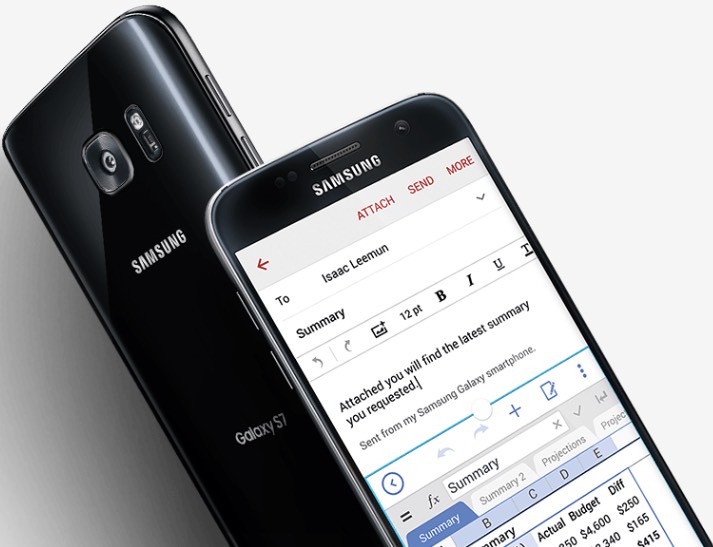
Do you work from a home office? A surprising number of Canadians do. According to a Fraser Institute report, self-employment accounted for 15 percent of jobs in Canada in 2013. Those numbers have grown significantly (that same Fraser Institute report showed self-employment increased 50 percent between 1990 and 2013) and while there have been other factors at play including the 2008 recession, the ability to run a business from your home has also played a big part.
Add those numbers to the growing trend toward traditional employers allowing some employees to work from home, and there are a lot of home offices set up across Canada. One of the big drivers for being able to set up a home office has been technology. In particular, there are three devices that have become central to any home office: the computer, the smartphone and the router.

Every Home Office Needs a Computer
The focal point of virtually every home office is the computer. Prior to the PC era, setting up a home office was a little more daunting. I remember hanging out in my grandfather’s home office as a kid—he used it to run several businesses, including a restaurant, a dairy and a floral shop—and it was overwhelming. There were stacks of paper everywhere, along with a typewriter and calculator. Piles of ledgers were needed to manually keep track of expenses and revenue, all orders were stacks of paper that had to be manually tracked and accounted for. Correspondence had to be hand written or typed. Payment for anything required cheques, each of which had to be accounted for in those stacks of ledgers. Promotion and marketing or making up a new menu meant sketching things out by hand, then taking these to a print shop to be professionally typeset and printed.
The personal computer changed all of this dramatically.
With a PC and the right software, many people do their job without needing to be in a structured office. That same PC can used to track every aspect of a business and its operations. A self-employed person or small business owner can easily run their business—using their PC to track expenses, make electronic payments, order products, even market their services—with minimal training. Contacting clients and suppliers? The PC lets you e-mail, message or Skype them. At the end of the year, you might want to send those spreadsheet for an accountant to review (although tax software on your PC can handle many small business needs) and marketing campaigns might call for a professional web designer, but virtually any function of a small business can be managed from a home office equipped with a PC and a productivity package like Microsoft Office.
Thanks to the PC, people can not only work from home, but they can effectively operate a small business from their home office.
Every Home Office Needs a Router
Of course even a PC on its own is relatively limited. What really lit the match when it comes to a home office was the internet. The PC provided a compact, affordable and easy to use piece of equipment that could do virtually anything, with the right software. The internet provided the communication backbone and the connectivity. For many people, internet is the actual marketplace for their business. Instead of a traditional store and print advertising, they operate virtually, using a website, e-mail, electronic payment systems like PayPal and other online services. For the work from home crowd, the internet provides the connection to their company’s network that lets them work offsite.

The gateway to your home office’s internet access is the router. With a new 802.11ac Wi-Fi router, your connection to the internet is as fast as your ISP allows. That means snappy web browser performance and no waiting for large files to download. Video conference calls can be in high definition with no stutter or lag. Actions that require speed are lightning fast.
That router isn’t just the key to internet access for your PC, it’s also the communication backbone for all you home office peripherals. With a Wi-Fi router, the ugly spectre of cables can be largely banished. Printers, external hard drives, additional PCs, tablets and smartphones can all be connected using Wi-Fi. As such a vital hub, it’s important to maximize performance, which is why I recommend upgrading to an 802.11ac router if you haven’t already. This latest Wi-Fi standard is much faster than anything before but just as importantly for a home office situation, it is much better at supporting multiple Wi-Fi connected devices simultaneously.
Every Home Office Needs a Smartphone
I’ve been working out of a home office intermittently for several years and full-time for the past eight years. What really took my effectiveness to the next level was the smartphone.

Cell phones were fine for voice calls and the occasional, painful, text message, but it was the smartphone that truly let me operate independently. With a smartphone in my pocket, I could actually leave my home office and still remain fully functional. I have access to all my e-mail, can hit any websites I need to, receive alerts for anything requiring my attention and I can access any important work documents. I can still take voice calls, but those text messages are an awful lot easier than on the old cell phone keypads and I can do video conferencing as well. If I’m offsite at a meeting and want to capture something on a whiteboard, I don’t have to frantically scribble in a notebook, I just whip out my smartphone and snap a photo.
While the mobile freedom the smartphone brought has been a game-changer, one of its biggest benefits to someone working out of a home office gets less attention: being able to use it as a mobile hotspot. This feature has become critical for me. That PC and internet access is critical for my business, but there are at least several times every year where my broadband access is knocked out. Cables get cut. I’ve had outages that have lasted several days and that would be crippling. Except, I am able to use my smartphone as a Wi-Fi hotspot, using its cellular connection to provide internet access for my PC. I also heavily rely on this capability when traveling, especially when we’re camping—I can bring a laptop to handle any emergency business tasks, using my phone for internet connectivity.
There are plenty of other technologies that have improved the experience of working from a home office—things like all-in-one printers, for example—but the big three are the ones that ultimately make the modern home office possible.



